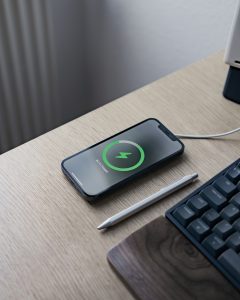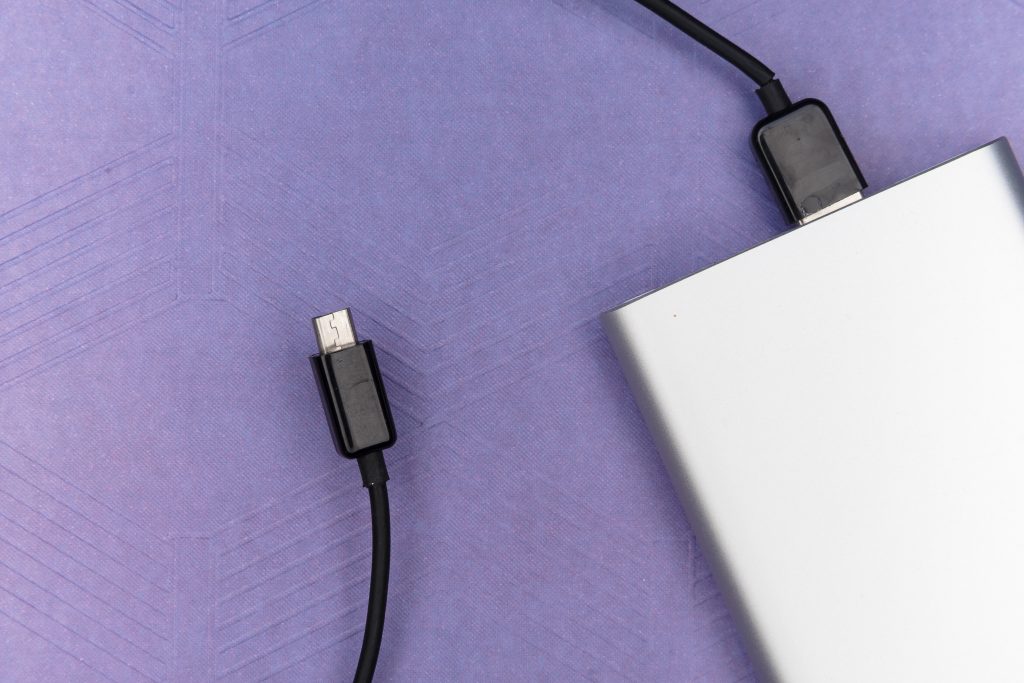Key Takeaways:
- Charging times can be estimated by using the battery capacity and input current
- Factors such as output power, quick charge technology, cable quality, battery level, and environmental temperatures can also affect charging times
In today's fast-paced, technology-driven world, staying connected is essential. Whether you're a frequent traveler, a student, or someone who relies heavily on electronic devices, a power bank has become a popular and indispensable accessory. However, it's important to understand the factors that influence the charging time of a power bank. In this post, we will delve into the intricacies of power bank charging and shed light on the various aspects that impact the time required to charge your devices.
Capacity And Input Current Are Primary Factors That Determine The Charging Time
Before we explore the charging process, let's discuss two crucial aspects: the capacity of a power bank and the input current it can handle.
Power Bank Capacity
A power bank’s capacity is measured in milliampere-hours (mAh) and indicates the amount of electrical charge a power bank can store. A milliampere-hour (mAh) represents one-thousandth of an ampere-hour (Ah), which is the standard unit for measuring electrical charge. An ampere-hour is the amount of charge transferred by a steady current of one ampere flowing for one hour. For example, a battery with a capacity of 2000 mAh can theoretically supply a current of 2000 milliamperes (or 2 amperes) for one hour before it is empty. If the device connected to the battery consumes less current, the battery can last longer. Conversely, the battery will deplete more quickly if the device consumes more current. Most power banks range from 5000 mAh to 10,000 mAh but can come in lower or higher capacities.
Input Current
The input current, usually denoted in amperes (A) or milliamperes (mA), refers to the rate at which the power bank can be charged. A higher input current enables faster charging, as it allows more current to flow into the power bank within a given time. Power banks with higher input currents can be charged more quickly than those with lower input currents. It's worth noting that power banks typically have a maximum input current specified by the manufacturer. Exceeding this maximum input current can damage the power bank and pose safety risks.
Calculating The Charging Speed
The time it takes to charge a power bank depends on its capacity and the input current it receives during charging. A good metaphor for this would be if you’re trying to find out how long it would take you to fill a bucket of water with a hose- it depends on the size of the bucket and how fast the hose can fill it.
The equation used to determine the approximate charging time is:
Charging Time (in hours) = Power Bank Capacity (in mAh) / Input Current (in mA)
For example, if you have a power bank with a capacity of 10,000mAh and it can handle an input current of 2A the equation would be:
2A x 1000 = 2,000 mA
Charging Time = 10,000mAh / 2,000mA = 5 hours
So in the end, a power bank with a capacity of 10,000mAh and an input current of 2A would take 5 hours to charge.
Charging Efficiency
It's important to note that the above equation is an estimation and assumes a constant input current throughout the charging process. Some energy is lost during the conversion process, primarily due to heat dissipation, which is why it’s hard to know exactly how long it will take to charge. Power banks also can consume a small amount of energy even when not actively charging devices. This is often referred to as standby power consumption or idle power drain. Higher-quality power banks are designed to have lower standby power consumption, resulting in better overall efficiency.
Five Additional Factors That Affect Charging Times
While the capacity and input current play a significant role in determining the charging time, several other factors can impact how long it takes to charge your device:
Output Power of the Charger
The power bank's charging speed can vary depending on the output power the charger uses. Chargers with higher power outputs can supply more current, resulting in faster charging times. Conversely, using a charger with a lower output power may prolong the charging process. To use our bucket metaphor again, this would be like after you fill your bucket with a hose, you then use that bucket of water to fill a tub. Depending on how big your bucket was will affect how long it will take to fill your tub. Common output current ratings can range from 1A to 3A, depending on the model and capacity of the power bank. Most phones fall within a range of needing 0.5A to 2.4A while bigger technology like iPads or tablets might need closer to 3A.

Quick Charge Technology
Power banks that support quick charging technologies, such as Qualcomm Quick Charge or Power Delivery, can charge much faster when used with compatible devices. Charging times can be significantly reduced to 2-3 hours or even less, depending on the specific power bank model and charger combination. These quick-charging technologies communicate by using a special signaling protocol. This communication allows the power bank to understand the device's power requirements and optimize the charging process accordingly.
Charging Cable Quality
The quality of your charging cable plays a crucial role in determining charging efficiency. A subpar or damaged cable can lead to power loss during transmission, reducing the charging speed. If the cable is damaged to a point where wires are exposed, you may be at risk for electrical shocks or other dangerous scenarios. Using a damaged cable can also harm the connected devices. Inadequate or unstable power supply can cause voltage fluctuations or uneven charging, potentially harming your devices or reducing their battery life. Charging your power bank with a damaged cable can also affect its lifespan. Inconsistent charging, power fluctuations, or excessive heat generated by a faulty connection can stress the power bank's internal components, including the battery. This can result in reduced overall performance and a shorter lifespan for the power bank. We always recommend using high-quality cables with good conductivity to optimize the charging process. To check out Nitecore’s charging cables, click here.


Battery Level and Usage
The current battery level of the power bank can impact charging time. Power banks that are almost fully empty will require more time to reach total capacity. Most power banks come with a light indicator of how many charges they have left or the remaining battery life. This can help you know how much power you have left before you have to charge your power bank from empty. Additionally, if you continue to use the power bank while it is charging, the charging speed will be slower.
Environmental Temperature
High Temperatures
High temperatures (anything above 113°F) can affect battery efficiency and slow down the charging process. Charging your power bank in a cool environment can help expedite charging. Heat can cause the internal temperature to rise, which can damage the battery cells. Lithium-ion batteries, commonly found in power banks, are particularly sensitive to heat. Prolonged exposure to high temperatures can lead to reduced battery capacity, shortened lifespan, and even permanent damage. Even if you're not directly in a hot environment, electronic devices tend to generate heat while charging, and charging in already warm conditions can exacerbate the issue. We recommend charging in a cool and well-ventilated area, away from direct sunlight or other heat sources. If you're outdoors and need to charge your devices, consider finding a shaded spot or waiting until you're in a cooler environment before charging.
Cold Temperatures
Cold temperatures (anything below 41°F) can damage your power bank as well. If the temperature drops too low, the liquid electrolyte inside the battery can freeze, causing irreversible damage to the battery. This can lead to a decrease in the overall battery life and performance. Cold temperatures can also affect the internal resistance of the battery, which can limit the power flow into your device.


Recap:
The charging time of a power bank depends on various factors such as its capacity, input current, output power, quick charge technology, cable quality, battery level, and environmental temperature. While a rough estimation can be made based on these factors, it's important to consider the dynamic nature of charging and the impact of these factors. Remember that the charging time provided by the equation is an approximation, and actual charging times may vary. It is advisable to refer to the manufacturer's guidelines and specifications for more accurate information regarding your specific power bank. To look at Nitecore’s line of power banks, click here.


In this blog, the explanation of power bank charging times is insightful. It provides a clear understanding of factors affecting charging speed, helping users make informed choices for efficient usage.